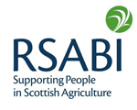Bloat occurs when the eructation mechanism is impaired or inhibited and the rate of gas production exceeds the animal’s ability to expel the gas. This can kill the animal because of the pressure on the internal organs.
There are two types of bloat, namely :-
- Frothy, the most common, usually associated with high clover content in the grass sward
- Gassy Bloat, caused by a blockage in the gullet, for example a potato, or because the animal cannot burp (milk fever)
Bloat risk is greatest on pastures with the following factors:-
- When animals are hungry and turned on to swards containing high levels of clover
- Dewy mornings and the swards are wet
- Cattle are more at risk than sheep
- Young animals are more at risk than older animals
- The sward contains a lot of red clover, rather than white clover
To minimise the risk from bloat:-
- Do not graze red clover
- Avoid grazing animals in the high risk periods of early and late season
- Supplement the animals with a high fibre diet such as hay or straw
- Turn animals on to dry clover swards as wet herbage increases the risk of bloat
- Consider the use of an antifoaming agent
A lush dense sward of red clover can provide a particular bloat risk in cattle. In this situation a ring feeder of straw or haylage should be offered to dilute the effects of gas build up. Whilst care has also to be taken with sheep, the risk appears minimal. All red clovers contain anti-oestrogens that radically affect the breeding performance of ewes. They should not be grazing 6 weeks pre and post tupping.




